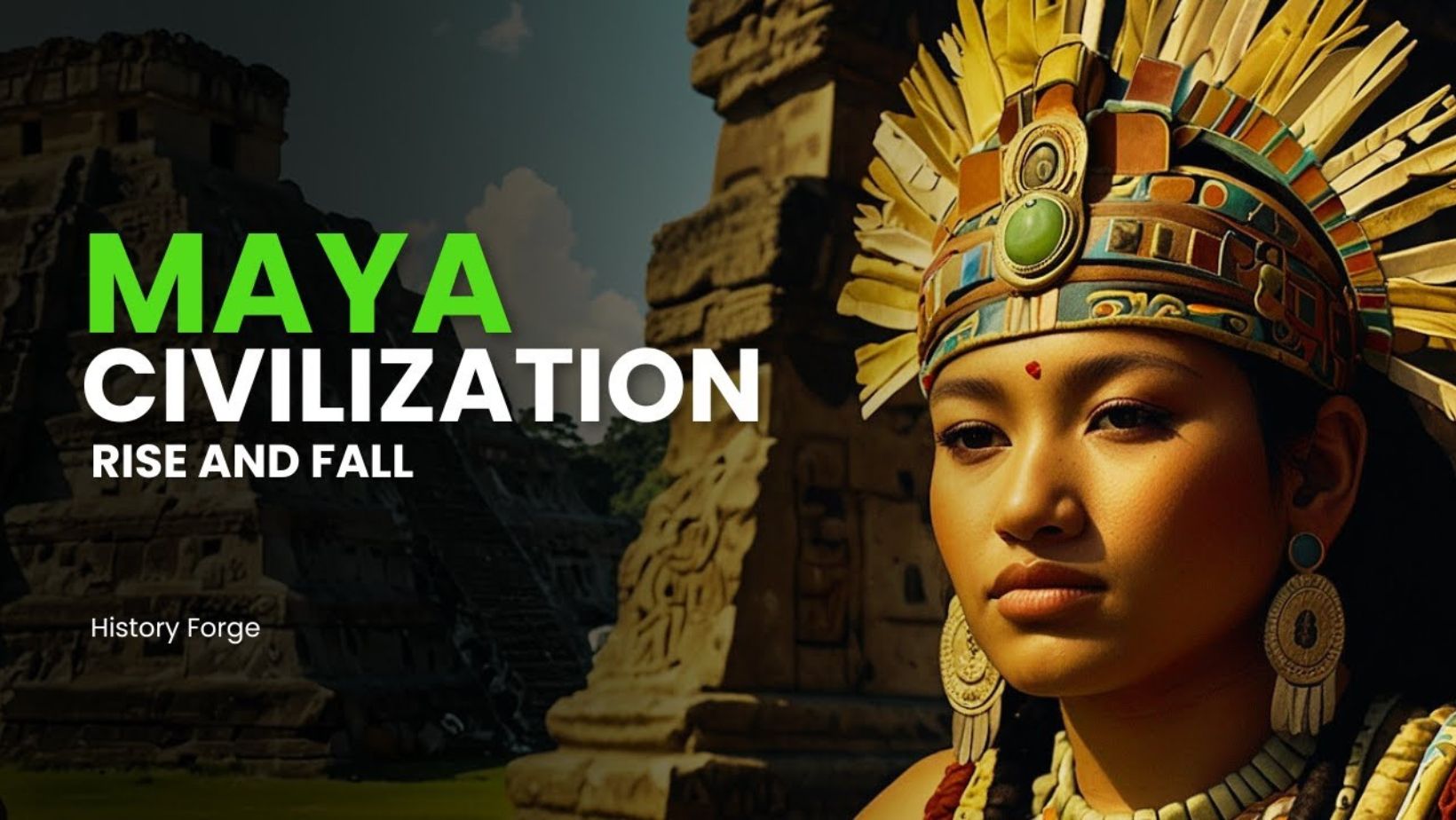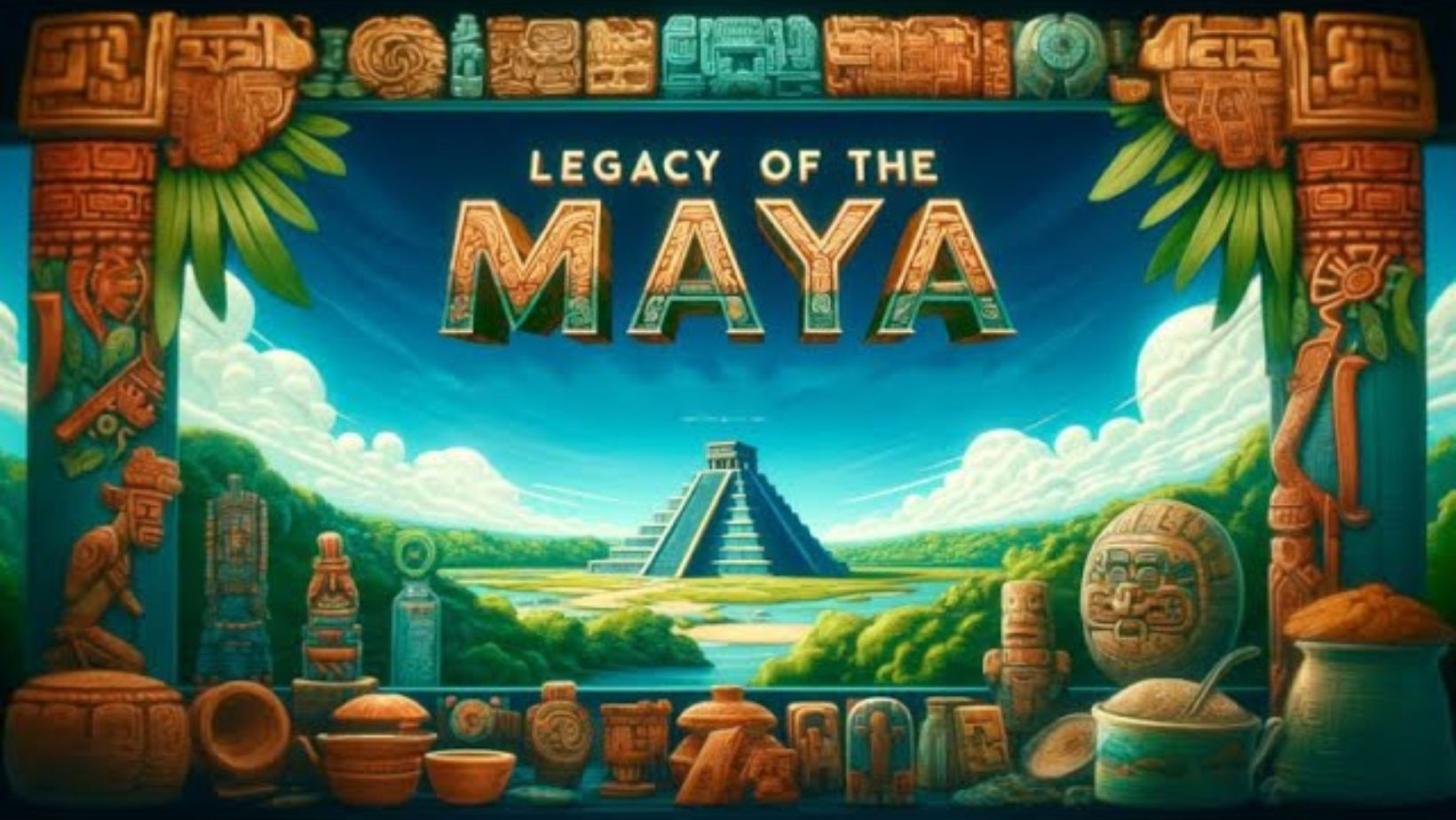The Maya civilization was a beacon of advancement in ancient Mesoamerica. Known for their impressive cities, intricate writing systems, and advanced agricultural techniques, the Maya left a mark that still resonates today. Their contributions extend beyond history; they influence modern cultures in various ways. From art and architecture to spirituality and cuisine, the legacies of the Maya continue to enrich our world. Join us as we explore how these ancient traditions shape contemporary society and remind us of the richness of human culture. Discover the enduring impact of the Maya and why it matters now more than ever!
Historical Context: The Rise and Fall of the Maya Civilization

The Maya civilization flourished in Mesoamerica from around 2000 BCE to 1500 CE. It reached its peak during the Classic Period, from 250 to 900 CE, marked by the construction of grand cities like Tikal and Copán. The Maya developed a sophisticated society with advancements in mathematics, astronomy, and writing, exemplified by their intricate hieroglyphics and calendar systems. They excelled in agriculture, creating innovative farming techniques like terracing and slash-and-burn methods.
However, the Maya civilization faced significant challenges. By the end of the 10th century, many city-states in the southern lowlands experienced decline, attributed to factors like environmental changes, warfare, and resource depletion. Despite this, the Maya persisted, adapting to their circumstances and moving northward. Even after the fall of their major cities, the Maya maintained their cultural identity, influencing future generations in the region. Understanding this historical context is crucial to appreciating the legacies they left behind.
Maya Language and Writing Systems: Legacies of the Maya
The Maya civilization developed a complex hieroglyphic writing system, which is one of the few fully developed writing systems in pre-Columbian Americas. This system consisted of over 800 symbols, combining logograms (representing words) and syllabic signs. It was used for recording historical events, religious texts, and rituals on monuments, pottery, and codices. The most famous examples of this writing can be found in archaeological sites like Copán and Palenque.
Maya hieroglyphs hold significant cultural and historical importance. They provide insights into the Maya worldview, including their beliefs, politics, and society. This ancient writing system has influenced contemporary indigenous languages, with many modern Maya communities preserving their linguistic heritage. Today, languages such as K’iche’, Q’eqchi’, and Yucatec Maya still reflect aspects of the original Maya language. Efforts to promote literacy and cultural identity among Maya descendants continue, helping to maintain a vital connection to their ancestors’ rich heritage. Understanding the Maya writing system emphasizes its lasting impact on both history and modern indigenous cultures.
Agricultural Practices: From Ancient Techniques to Modern Farming
The ancient Maya civilization was highly skilled in agriculture, utilizing various techniques to sustain their society. One of the most notable methods was the milpa system, a form of shifting cultivation. In this system, farmers cleared a piece of land, planted crops such as maize, beans, and squash, and then allowed the land to rest for several years. This practice enriched the soil and promoted biodiversity.
Today, many sustainable agricultural practices draw inspiration from Maya traditions. For instance, agroforestry combines traditional crops with trees, promoting ecological balance and improving soil quality. The use of natural fertilizers and pest control methods also reflects ancient techniques, reducing the need for synthetic chemicals. Additionally, modern farmers are recognizing the value of polyculture, planting multiple species together to enhance resilience and yield.
Maya agricultural practices offer valuable lessons for contemporary farming. They emphasize the importance of sustainability and environmental stewardship. By integrating these ancient techniques into modern agriculture, we can work towards more sustainable food systems that respect the land and support local communities. This connection to the past is essential for building a sustainable future.
Architecture and Urban Planning: Legacies of the Maya
Maya architecture was highly advanced, with impressive pyramids, temples, and palaces. Cities like Tikal and Palenque featured complex layouts designed around plazas and ceremonial centers. The Maya used elevated platforms, limestone, and stucco to create lasting structures. Their urban planning included residential areas, roadways, and sophisticated water management systems.
These ancient designs influence modern urban planning. Maya city layouts prioritized communal spaces, a feature echoed in today’s city planning. Their use of terraced platforms and multi-level structures parallels modern architectural trends. Furthermore, Maya water systems inspire sustainable practices in contemporary urban design, especially in managing resources efficiently.
Architects today admire the Maya for their understanding of geometry and scale. Their structures are known for their durability and aesthetic appeal. Urban planners also study the efficient use of land in Maya cities. This inspires sustainable growth and better city layouts in the modern world.
Overall, the Maya’s approach to architecture and urban planning has a lasting impact. Their advanced techniques continue to inform modern design and urban development. By understanding their methods, architects can blend ancient wisdom with new technologies. This creates cities that are both functional and aesthetically pleasing.
Spiritual Beliefs and Practices: Legacies of the Maya
The Maya had a complex spiritual belief system centered around gods, nature, and the cosmos. They believed in a multi-layered universe, with each level inhabited by different deities. Rituals were performed to honor gods, often involving offerings, bloodletting, and ceremonies. Sacred sites, such as pyramids and cenotes, were central to these practices.
Maya religious traditions are still alive today. Modern Maya communities continue to perform rituals tied to the agricultural calendar and natural elements. Their belief in the interconnectedness of humans and nature has influenced spiritual practices beyond their culture. Many aspects of Maya cosmology, like honoring the cycles of the sun and moon, resonate with modern spiritual movements.
Elements of Maya spirituality also appear in New Age and holistic practices. Concepts such as energy centers and the reverence for nature are seen in modern wellness approaches. Some people look to ancient Maya rituals for guidance in personal growth and spiritual healing. These practices reflect the Maya’s deep understanding of balance and harmony in life. Legacies of the Maya
In summary, Maya spiritual beliefs have had a lasting impact. Their rituals and worldviews continue to shape modern spiritual traditions. Through their ancient practices, the Maya offer wisdom on living in harmony with the universe. Legacies of the Maya
Art and Symbolism: From Ancient to Contemporary
Maya art is known for its intricate designs and symbolic motifs. Common styles include detailed carvings, murals, and pottery depicting gods, rulers, and animals. Maya artists used vivid colors and geometric patterns to convey spiritual and political messages. Symbolism in their art often represented the connection between the earthly and divine realms. Legacies of the Maya
These artistic traditions continue to influence modern art. Contemporary artists draw from Maya motifs like the jaguar, serpent, and sun to create cultural expressions. Maya glyphs and patterns are used in modern visual arts, fashion, and design. The emphasis on nature and the cosmos in Maya art resonates in eco-friendly art movements today.
In addition, murals inspired by Maya styles can be seen in public spaces across the world. These works reflect a desire to honor indigenous cultures and their artistic legacies. Some modern artists also incorporate Maya themes into digital art, blending ancient symbolism with new media. This fusion keeps Maya artistry relevant in contemporary culture.
Overall, Maya art and symbolism have left a lasting mark. Their motifs and styles continue to inspire artists across various mediums. By blending ancient themes with modern techniques, today’s artists pay homage to Maya creativity and cultural heritage. Legacies of the Maya
Culinary Heritage: Maya Foods and Cooking Techniques
The Maya had a rich culinary heritage based on locally available ingredients. Maize (corn) was the staple of their diet, along with beans, squash, and chili peppers. They also used cacao to make a special chocolate drink and prepared tamales and tortillas from ground corn. Cooking techniques included steaming, grilling, and slow-roasting over open fires.
Many traditional Maya foods are still popular in Central American cuisine today. Dishes like tamales and tortillas remain central to diets across the region. Cacao continues to be used in modern chocolate-making, while traditional spices like achiote add flavor to many contemporary dishes. The use of fresh, locally sourced ingredients mirrors the sustainable practices of the ancient Maya.
Modern Central American cuisine is deeply influenced by Maya traditions. Restaurants and street vendors serve dishes that honor these ancient roots, often prepared using similar techniques. The emphasis on corn, beans, and chili can be traced directly back to Maya culinary customs. Maya-inspired cooking is also celebrated in food festivals and cultural events throughout the region.
In summary, the Maya’s culinary heritage has had a lasting impact. Their traditional ingredients and methods are still alive in modern Central American cuisine. This connection preserves and honors their rich food culture. Legacies of the Maya
Festivals and Cultural Celebrations: Legacies of the Maya
Traditional Maya festivals were deeply tied to their religious beliefs and agricultural cycles. Festivals like the Wayeb, a five-day period marking the end of the year, and K’iche’, celebrating the maize god, were important. Rituals involved music, dance, offerings, and feasts, connecting the community with their gods and nature. These festivals helped ensure successful harvests and honored deities central to Maya life.
Today, many Maya festivals are still celebrated, especially in indigenous communities. Modern festivals like Día de los Muertos in Guatemala blend ancient Maya traditions with Catholic influences. Rituals involving offerings to ancestors and communal gatherings continue to reflect ancient beliefs. Other festivals celebrate the importance of the corn harvest, a sacred symbol in Maya culture.
In addition, these cultural celebrations have spread beyond Maya communities. Tourists often attend these festivals to experience the vibrant dances, music, and traditions. Maya heritage is also kept alive through performances and reenactments at cultural centers and museums. These events celebrate the resilience of Maya culture and its importance in modern society. Legacies of the Maya
Overall, traditional Maya festivals hold deep significance. They continue to thrive in modern-day communities, preserving ancient traditions. Through these celebrations, the Maya honor their past and sustain their cultural identity. Legacies of the Maya
Indigenous Rights and Cultural Revival: Legacies of the Maya
In recent years, there has been a strong revitalization of Maya culture. This resurgence focuses on preserving language, traditions, and spirituality. Many Maya communities are actively teaching younger generations about their heritage. Cultural festivals, workshops, and schools emphasize the importance of Maya history and identity.
Indigenous rights movements play a key role in this cultural revival. These movements fight for land rights, respect for sacred sites, and protection of traditional knowledge. Activists work to preserve the Maya language and prevent cultural erosion. Through these efforts, the Maya people are reclaiming their place in society and ensuring their traditions endure. Legacies of the Maya
Governments and organizations are also supporting Maya cultural preservation. Programs aim to safeguard Maya art, customs, and archaeological sites. Indigenous leaders collaborate with educators to keep ancient wisdom alive in modern contexts. This partnership between communities and institutions strengthens the survival of Maya culture.
The revitalization of Maya culture is a testament to the resilience of its people. Indigenous movements are critical in preserving and promoting their traditions. By reclaiming their heritage, the Maya ensure their culture thrives for future generations. This cultural revival highlights the importance of protecting indigenous identities worldwide.
Global Influence: The Maya in Popular Culture
Maya themes have become prominent in global popular culture. Literature, films, and media often depict Maya history, mythology, and architecture. Movies like Apocalypto and books about Maya mysteries bring their civilization to mainstream audiences. These portrayals highlight the allure of Maya pyramids, calendars, and their advanced understanding of time. Legacies of the Maya
However, these representations are not always accurate. Films and media often dramatize or fictionalize Maya culture, focusing on sensational aspects like human sacrifice. This can lead to misunderstandings or oversimplifications of their complex society. Despite this, Maya imagery sparks interest in their civilization and raises awareness about their contributions to history.
Global perceptions of the Maya have been shaped by these portrayals. The Maya are often seen as mysterious or mystical, which both fascinates and distorts their true cultural heritage. However, these depictions have also inspired academic interest and tourism in Maya regions. This has helped fuel greater appreciation for their advanced knowledge of astronomy, architecture, and art.
In conclusion, Maya themes in popular culture play a powerful role in shaping global views. While not always accurate, these portrayals draw attention to their fascinating civilization. This exposure helps keep the Maya culture relevant in today’s world.
Conclusion: Legacies of the Maya
The legacy of the Maya continues to influence modern cultures through art, architecture, spirituality, and cuisine. Their advanced knowledge and traditions remain relevant, inspiring contemporary practices in urban planning, cultural celebrations, and even popular media. Preserving this rich heritage is vital to honor the contributions of the Maya to global history.
We must support efforts to protect Maya sites, traditions, and languages. By celebrating and learning from their culture, we ensure that the wisdom of the Maya endures for future generations. This heritage is a living connection to the past that deserves recognition and respect. Legacies of the Maya
FAQs
What materials did the Maya use to build their structures?
The Maya primarily used limestone, stucco, wood, and other natural materials found in their region. Their construction techniques included creating platforms and using corbel arches for doorways and temples.
How did the Maya view the afterlife?
The Maya believed in a complex afterlife, with the soul journeying through different levels of the underworld. The deceased needed guidance, which was provided through burial rituals, offerings, and sometimes the placement of jade in the mouth to ensure safe passage.
What role did astronomy play in Maya society?
Astronomy was crucial for the Maya, as they used it to track time, create calendars, and plan agricultural activities. They built observatories to monitor celestial events and align temples with important astronomical occurrences.
What is the significance of the Maya ball game?
The Maya ball game, Pok-a-Tok, was a ritualistic sport with religious significance. It symbolized the struggle between life and death, and some games were connected to important ceremonies or sacrifices.
Are there any modern descendants of the Maya?
Yes, millions of people in Central America, particularly in Mexico, Guatemala, and Belize, are descendants of the ancient Maya. Many continue to practice Maya traditions, speak indigenous languages, and celebrate cultural festivals.

